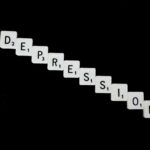There’s something almost magical about stories-the way they wrap around our hearts, carry us through the darkest nights, and gently lead us back to the light. In a world that often feels overwhelming and isolating, storytelling becomes more than just entertainment; it becomes a lifeline. It’s in the stories we tell and hear that we find pieces of ourselves, unlock hidden strength, and begin to heal wounds we didn’t even know were open. In this article, we’ll explore the healing magic of storytelling-how sharing our journeys and embracing the narratives that resonate can guide us toward resilience, connection, and ultimately, the power to rise again.
The Power of Personal Narratives in Emotional Recovery
Stories are more than just words; they are the threads that weave our fractured emotions into a tapestry of healing. When we give voice to our inner journeys, we reclaim control over the chaos that once felt overwhelming. This act of sharing-whether whispered in a journal or spoken aloud to a trusted friend-allows us to reorganize our pain into meaning. Through personal narratives, wounds become lessons, and vulnerability transforms into strength. It illuminates the path from suffering to understanding, inviting empathy not only from others but also from the deepest corners of our own hearts.
Consider how storytelling empowers by offering:
- a safe space to confront and make sense of emotions
- a bridge connecting fragmented experiences to holistic growth
- a beacon that guides us toward resilience and hope
In embracing our stories, we don’t just heal; we find the courage to thrive beyond the shadows of our past, crafting a new narrative filled with possibility and inner strength.
How Sharing Your Story Builds Connection and Resilience
When we open up and share the chapters of our lives-whether they’re filled with triumphs or trials-we invite others into our world with raw honesty. This act of vulnerability acts as a bridge, transforming isolation into intimacy. It’s in these moments of sharing where empathy blossoms, weaving invisible threads of understanding and compassion between hearts. Through storytelling, we realize we are not alone in our struggles; others have walked similar paths, carrying their own scars and wisdom. This shared humanity fosters a sense of belonging, making us stronger together.
Beyond connection, telling your story is a powerful balm for resilience. It lets you reclaim control over your narrative and rewrite the meaning embedded in your experiences. When you voice your journey, you:
- Process emotions that may have been buried or confusing.
- Recognize personal growth embedded in hardship.
- Empower yourself by transforming pain into purpose.
- Build courage to face future challenges with renewed strength.
This creative and courageous act of storytelling not only cements inner strength but also inspires those who hear it to embrace their own stories with hope.
Transforming Pain into Purpose Through Reflective Storytelling
Within the depths of our most challenging experiences lies a quiet power waiting to be awakened. Reflective storytelling offers a sacred space to untangle the threads of pain, allowing us to reframe our struggles as transformative chapters rather than defining moments of defeat. Through the act of sharing our narratives-whether spoken, written, or visualized-we not only release the weight of isolation but also illuminate the universal human experience that connects us all. This process is more than catharsis; it is a deliberate crafting of meaning that empowers resilience and fosters inner strength.
Engaging with our stories invites a profound shift from victimhood to authorship, where we become the architects of our healing journey. In this creative re-authoring, we:
- Recognize hidden lessons beneath the surface of our suffering,
- Embrace vulnerability as a bridge to authentic connection,
- Transform pain into a purpose that inspires not only ourselves but others,
- Cultivate empathy through a shared human language of growth and recovery.
The magic of storytelling lies in its ability to spark hope and courage-a reminder that within every hardship, there is the seed of remarkable strength waiting to bloom.
Practical Steps to Use Storytelling for Healing and Growth
Begin by creating a sacred space for your story-whether it’s a journal, a trusted friend’s ear, or a quiet corner of your mind. Allow yourself to be vulnerable without judgment and lean into the emotions that arise. The power of storytelling lies in embracing your truth and weaving it into a narrative that reflects both your pain and your resilience. Take small, intentional steps such as:
- Journaling without filters – write freely, letting your emotions flow onto the page without editing.
- Using metaphors and imagery to transform difficult memories into symbolic stories, making them easier to face.
- Sharing your story selectively with trusted listeners who can hold space with empathy and compassion.
As you continue, notice how telling your story becomes a pathway to understanding and growth. Each retelling empowers you to reclaim your narrative, transforming wounds into wisdom. Embrace storytelling as a sacred dialogue between your past and your evolving self, allowing healing to unfold naturally and courageously within the chapters of your life.
Closing Remarks
As we close this journey through the healing magic of storytelling, it’s clear that within each of us lies an untold narrative waiting to be shared. Stories are more than just words-they are lifelines, bridges to understanding, and vessels of strength that help us navigate life’s storms. When we find the courage to tell our stories, we don’t just heal ourselves; we create a ripple of connection and hope that reaches far beyond our own hearts. So, whether through writing, speaking, or simply listening, embrace the power of your story. In doing so, you unlock not only your own resilience but also the transformative magic that comes from sharing and being heard. Keep telling, keep healing, and remember: your story matters.
















